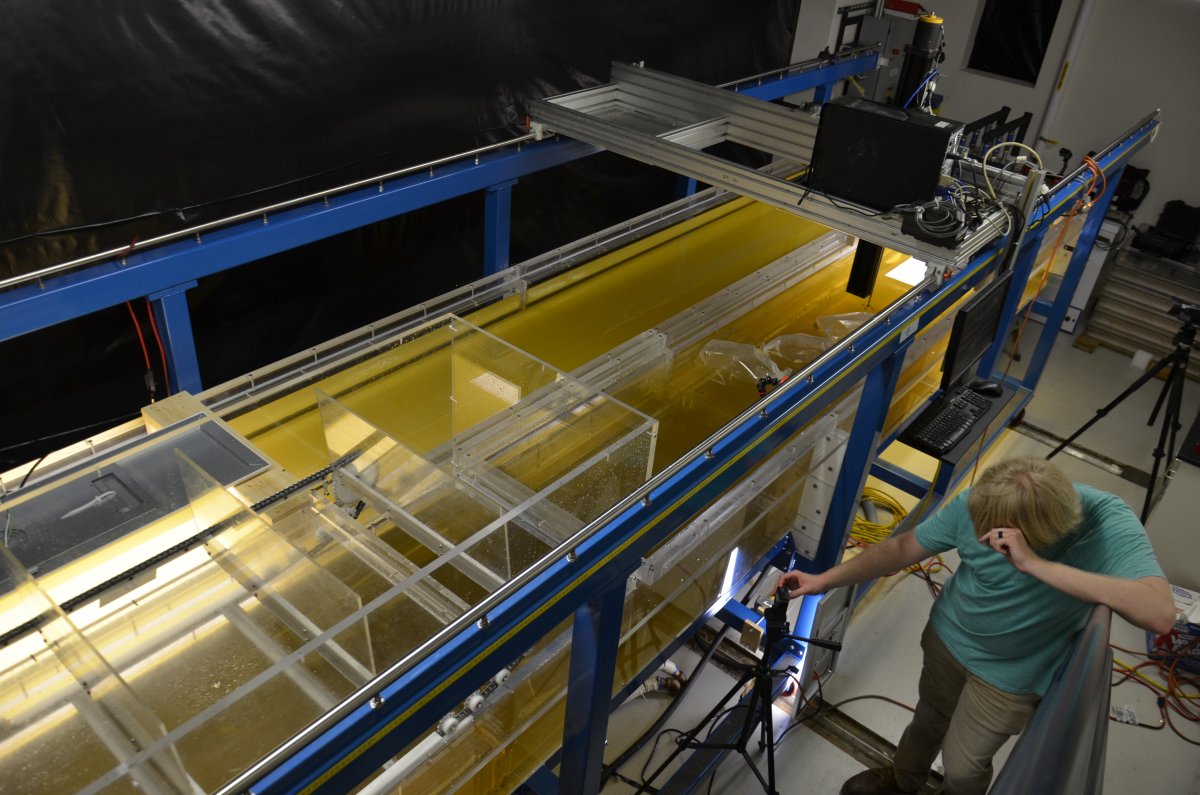SAFL team designs flume to support juvenile fish studies

Project Summary
Due to unpredictable field conditions, it can be difficult to monitor and observe biological organism behaviors in the field; when the organism of interest is a young pallid sturgeon less than 10 cm in length, field studies can become near impossible.
The United States Geological Survey (USGS) tasked SAFL researchers with the design of a race-track style flume, with the geometry and hydraulic conditions for early life stages of pallid sturgeon, an ancient but endangered fish species which historically inhabited the Missouri and lower Mississippi rivers. SAFL was responsible for providing the USGS with intermediate design drawings in addition to final construction and fabrication drawings for the flume.
Methods
Preliminary research was conducted using the SAFL Ecoflume, which has a heat exchanger to regulate water temperature, a paddle wheel instead of a pump to circulate water, and a race-track design. Several life stages of sturgeon were transported to SAFL and subjected to different water velocities in the Ecoflume. The responses were observed, and data were recorded to inform the flume design for USGS.
This project was conducted in three phases: conceptual design, design development, and final design. In phase I, SAFL managed design meetings and came up with a preliminary flume design that included the hydraulic and biological conditions, structural and mechanical concept, and data acquisition system design. In phase II, SAFL engineers developed the design through laboratory prototyping. In phase III, SAFL produced a final design with construction drawings, and cost estimates for materials and labor.
Outcomes
The result of this project was a unique, specialized race-track flume design, suited to the specific needs of the USGS Columbia Environmental Research Center (CERC). The flume will be 11.5 meters long with channels, 1 meter deep, and 1.5 meters wide, with a volume of nearly 9,000 gallons. The flume will be equipped with a jet water propulsion system for studies with larvae and juvenile fish, and a paddle water propulsion system for studies with sturgeon embryos. Researchers will be able to control the flume temperature, substrate, and bedforms, and take high resolution velocity and bedform measurements.
Future Work
Future work for this project could include construction of the designed flume at SAFL, and preparing the flume for shipment to CERC, installation and testing.
